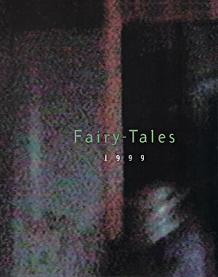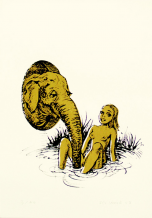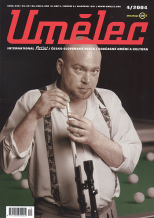| Zeitschrift Umělec 2003/2 >> Trekka | Übersicht aller Ausgaben | ||||||||||||
|
|||||||||||||
TrekkaZeitschrift Umělec 2003/201.02.2003 Sophie Jerram | nz | en cs |
|||||||||||||
|
The New Zealand pavilion at the Venice Biennale this year holds a strange social history lesson that examines “wheeler dealing” trade with Czechoslovakia in the 1960s and 70s.
Michael Stevenson’s This is the Trekka is the museum-like display of a water-computer and a car, invented in the 1960s. This was a period of New Zealand isolationist history the curators call an “economic monoculture,” when, according to Robert Leonard, New Zealand was “socialist but anti-communist.” During this period, the New Zealand economy was so tightly regulated that imports — including cars — had to exactly match exports. Auckland businessman Noel Turner decided that the time had arrived for the New Zealand-made car. Even with a population under three million people, Turner believed that with a simplistic, Completely Knocked Down (CKD) car assembly industry, he could capture the New Zealand market with an “85% NZ made” car. The remaining 15% would come from the Czechoslovak Socialist Republic in the form of Škoda engine and chassis parts. These parts were bartered — at first for sausage casings — by Turner around 1966, and continued to be imported until production fell off in the 1970s. The car, named the “Trekka,” was advertised as having the characteristics of a Four Wheel Drive, and compared well in test trials with the British Land Rover and the US Jeep. There was general unease at the trade. Though imports of whole Škoda cars had been taking place since the 1950s, the New Zealand government was uncomfortable that this iconic new vehicle would be made with mechanicals from the Communist Bloc. Yet they turned a blind eye. Some Trekkas were even flown to Vietnam to help fight communism. Other sales were considered with Australia, Cyprus, Jamaica, Zambia and other parts of Asia. The Trekka was never a money-earner for New Zealand and eventually the rest of the world caught up — the New Zealand market was opened to the cheaper, reliable and more comfortable Japanese motor vehicle. Suggesting that the dealings and manufacture of the Trekka represented a kind of naive New Zealand pride and independent spirit, Stevenson’s installation is also a quiet observation of trade in a non-globalized world. It shows intriguingly that New Zealand had more in common with Czechoslovakia than would have been imagined between countries on either side of the Iron Curtain — including restrictions on currency and goods. This story is, on its own, an obscure social history, but its presentation as art exhibit reminds New Zealanders and visitors alike of the lack of New Zealand experience in exhibiting art in international circles. More habituated to organizing trade fairs than art fairs, New Zealand’s Diplomatic Corp made sure that New Zealand’s first ever showing at Venice in 2001 was infused with NZ drinks and food stuffs. In 2003, Stevenson has intentionally hidden the art in the shadows of an anachronistic trade display, rather than having the trade badly disguised behind the art. To the world, New Zealand is known best for sheep, butter, scenery and rugby — all of which are exported in some form of trade to the other side of the world, generating income for our all-concerning balance of trade. In This is the Trekka, the Trekka car sits in front of stacks of boxes of New Zealand Dairy Board butter — representing the quantity of exported butter the country had to sell in order to bring in a new car. Estimations of economic value are central themes in this work. This is the Trekka also includes a display of another NZ invention, the Moniac, a machine using pumped water designed by W. A. Philips in 1949 to display the inputs and outputs required for the perfect Keynesian economy. It was hoped that the Moniac “computer” would sell as a tool for teaching “economics in thirty fascinating minutes,” according to a 1952 Fortune Magazine article printed in the exhibition catalogue. Perhaps economics teachers recognized their peril and added layers of complexity to the subject to keep themselves employed. History does not yet relate but by any means the Moniac died a quiet death, superseded by the advent of electronic computers. Exhibiting in La Maddalena church in Canareggio for the second time ever, New Zealand must try much harder to gain the attention of the Venice public than those inside the custom-designed Giardini. You could say it’s a “hard sell” for New Zealand. And the focus of the 2003 exhibit, an obscure period in NZ history in which Czechoslovak Škoda parts were bartered for sausage casings, may seem particularly resistant to comprehension by those who have little knowledge of the country. New Zealand is a 24-hour flight from Europe. But like the country itself, once you’ve made it to La Maddalena, you are compelled to stay, you’re too invested to quit. You’ve made the journey, now you’re forced to digest the culture. In the end, your effort to understand the country and the art is self-fulfilled. It probably is “worth the trek.”
01.02.2003
Empfohlene Artikel
|
|||||||||||||
|
04.02.2020 10:17
Letošní 50. ročník Art Basel přilákal celkem 93 000 návštěvníků a sběratelů z 80 zemí světa. 290 prémiových galerií představilo umělecká díla od počátku 20. století až po současnost. Hlavní sektor přehlídky, tradičně v prvním patře výstavního prostoru, představil 232 předních galerií z celého světa nabízející umění nejvyšší kvality. Veletrh ukázal vzestupný trend prodeje prostřednictvím galerií jak soukromým sbírkám, tak i institucím. Kromě hlavního veletrhu stály za návštěvu i ty přidružené: Volta, Liste a Photo Basel, k tomu doprovodné programy a výstavy v místních institucích, které kvalitou daleko přesahují hranice města tj. Kunsthalle Basel, Kunstmuseum, Tinguely muzeum nebo Fondation Beyeler.
|

































 Potsdamer Str. 161 | Neu Divus in Zwitschermaschine, galerie und buchhandlug in Berlin! | Mit U2 nach Bülowstraße
Potsdamer Str. 161 | Neu Divus in Zwitschermaschine, galerie und buchhandlug in Berlin! | Mit U2 nach Bülowstraße
Kommentar
Der Artikel ist bisher nicht kommentiert wordenNeuen Kommentar einfügen